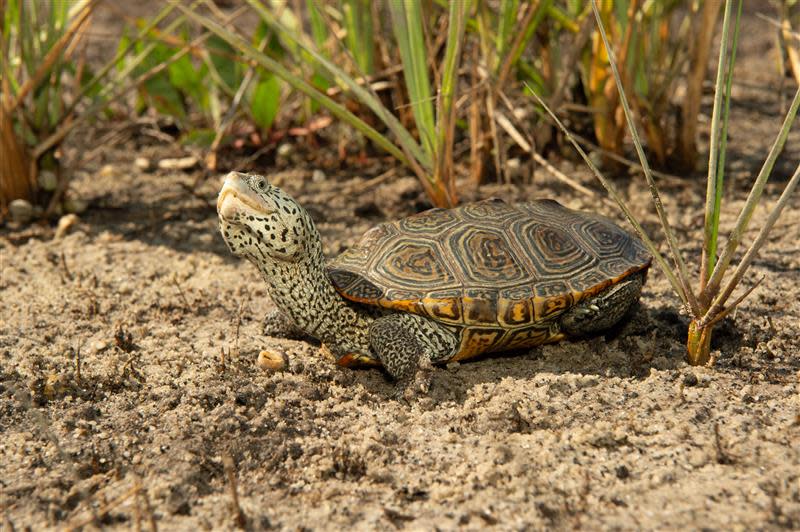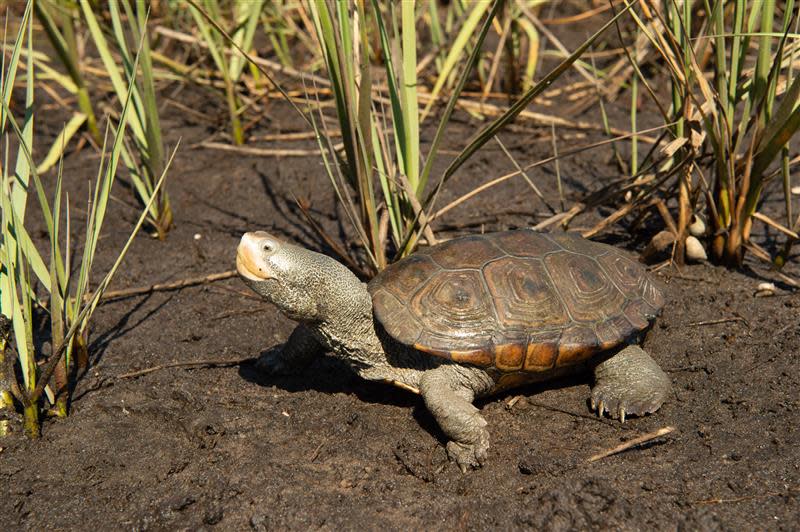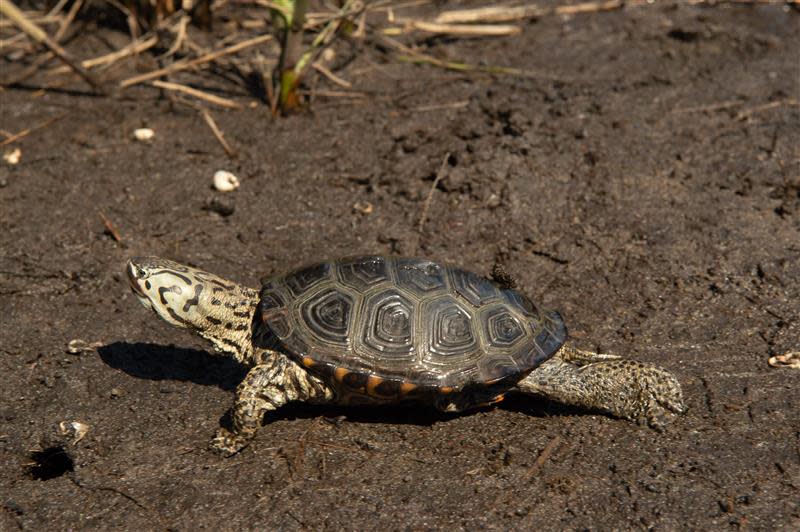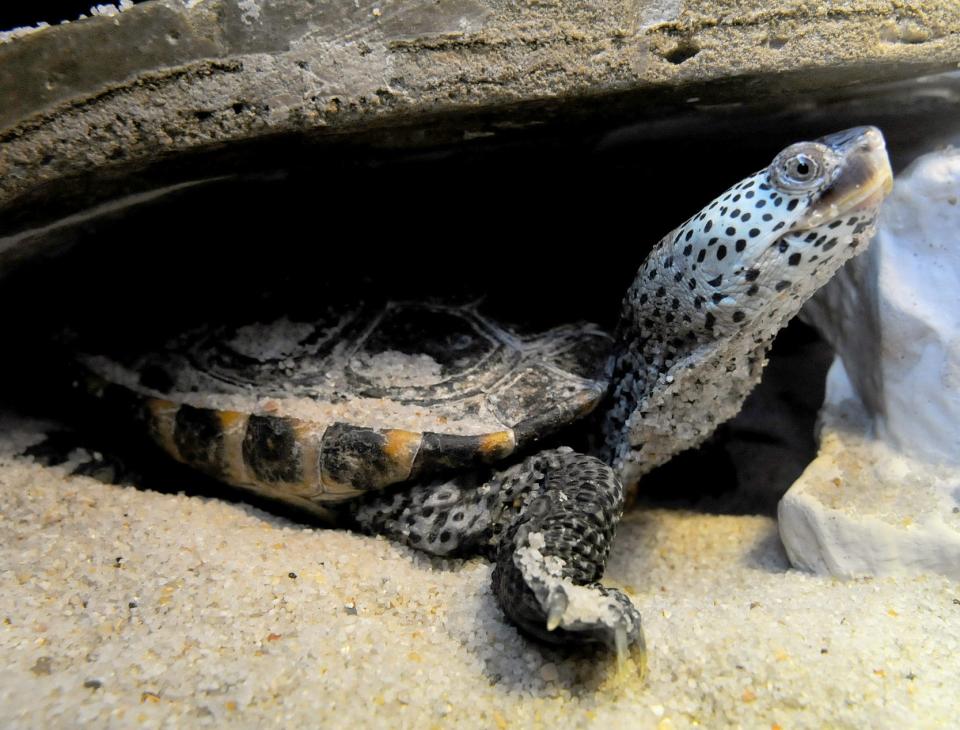Kayakers wanted: Researchers need help in learning more about a tiny NC coastal turtle

Own a kayak? Interested in helping biologists learn more about one of the coast's most little-known residents?
Then the N.C. Wildlife Resources Commission (WRC), N.C. Coastal Reserve, and a bunch of partner agencies and environmental groups want to talk to you about taking a little paddle in a few weeks.
This year represents the 10th year of a volunteer-led effort, dubbed the "Terrapin Tally," to help researchers increase their knowledge about the diamondback terrapin, a shelled reptile that doesn't get nearly the public's attention or love of its larger, flippered brethren that also calls North Carolina's coastal waters home.
Wait, there's a small turtle that likes brackish waters?
Yes. The diamondback terrapin is a native species that is found in saltwater marshes along much of the U.S. East and Gulf coasts.
The clawed turtles, which have strong webbed hind feet that make them very good swimmers, live in the mucky areas along tidal creeks, saltwater marshes, and the backsides of barrier islands, where they feast on snails and other mollusks.

Are they endangered?
No. But that doesn't mean they little guys, no two of which look alike thanks to the diverse diamond patterns on the top of its shell and varied shell colorings, can't use a helping hand.
The turtle is listed as a species of special concern in North Carolina, and can only be collected in the wild under a special permit. It also is a species of greatest conservation need in the state.
Once very plentiful, the terrapins became a popular main ingredient in soup, leading to overharvesting. They also were once so common that the turtles were a nuisance for fishermen, filling up crab pots and nets.
But that was decades ago.
Today the diamondbacks, while no longer hunted to be a dinner ingredient, face new challenges. According to the wildlife commission, loss of habitat, developmental pressures, and mortality from incidental capture in nets and crab pots − especially abandoned gear − pose the greatest threats to terrapin populations.
Nests, hatchlings and small turtles also can fall prey to foxes, raccoons and large birds, like crows and sea gulls.

So where does the public come in?
To help track the health of local diamond terrapin populations, researchers for a decade have engaged with volunteers to "explore" coastal and marshy areas between Carteret and Brunswick counties for the shelled critters.
The value of the citizen-science project is to increase the overall knowledge about the turtles, which can be hard to track since most of their activity besides nesting takes place in the water.
Hope Sutton, eastern wildlife diversity supervisor with the wildlife commission, said the limited knowledge researchers have about the terrapin limits what protections they can propose to help the turtles recover and recolonize areas where they are no longer found.
"One of the reasons it's listed as a species of concern is because because we just don't have enough data to know more than that, such as if other steps are needed to help it out," she said, noting that officials also don't have the manpower to check out the thousands of acres along the coast where the turtles could be, either − hence the beauty of enlisting volunteers as force multipliers.
Collecting more information, especially current population densities in areas where the turtles were historically common, could help lead to better and stronger management practices that could help the slow-reproducing reptiles recover, Sutton said.
That could include steps in some areas where the turtles are known to reside requiring crab pots to have exclusion devices on them to help turtles looking for an easy meal escape rather than drown. Only two areas in North Carolina, Masonboro Island and waters around Zeke's Island and Bald Head Woods, currently require pots to have bycatch reduction devices for trapped terrapins.

Training and paddling
But volunteers looking for a scenic paddle and to help the tiny turtles can't just hope in their kayak and go. They must attend a mandatory training session which takes place from 10 a.m. to 12 p.m. on Saturday, April 13, at the UNCW Center for Marine Science or the N.C. Aquarium at Pine Knoll Shores. Volunteers also can participate virtually via Zoom.
Along with training materials on how to spot the turtles and information on how to log their findings, volunteers will also get to choose a designated route to paddle. Around Wilmington, the routes include areas around Lea-Hutaff Island, Masonboro Island, Fort Fisher, Zeke's Island, Bald Head Island and the Bird Island Reserve.
"It's really like looking for a needle in a haystack," Sutton said about trying to spot a tiny turtle head amid marsh grasses and other marine vegetation. "But it's a lot of fun. Plus, you're on the water."
Paddle sessions will be offered April 25-28, May 9-12, and June 6-9, with times varying per day to align with local high tides.
Reporter Gareth McGrath can be reached at GMcGrath@Gannett.com or @GarethMcGrathSN on X/Twitter. This story was produced with financial support from the Green South Foundation and the Prentice Foundation. The USA TODAY Network maintains full editorial control of the work.
This article originally appeared on Wilmington StarNews: Kayakers wanted to help gather data about a tiny NC coastal turtle

